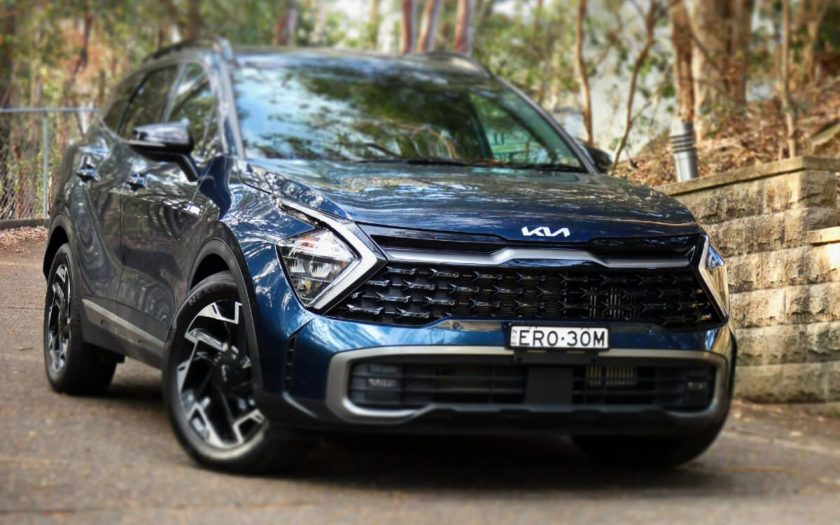Chris Riley tests the 2023 Kia Sportage SX+ with pricing, specs, ride and handling, safety, verdict and everything the over-50 driver needs to know.
Summary: There’s a lot to like about Kia’s smart new Sportage, but there’s a lot of variation in specs between the different models, so you’ll need to do your homework to get the one that’s best for you.
2023 Kia Sportage SX+ small SUV
Pricing: $43,850 (SX+, plus on road costs)
Options: auto (inc adaptive cruise control) $2500
Warranty: Seven-years/unlimited km, seven-years roadside assist, seven-year capped price servicing
Safety: Five-star ANCAP rating (based on Euro NCAP tests, 2022)
Build location: South Korea
Engine: 1.6-litre turbo intercooled DOHC four-cylinder petrol
Power: 132kW @ 5500rpm
Torque: 265Nm @ 4500rpm
Transmission: 7-speed DCT auto, all-wheel drive
Body: 4660mm (long); 1865mm (wide); 1660mm (high)
Kerb Weight: 1731kg
Braked towing capacity: 1900kg
Wheels: 19-inch alloy
Tyres: 235/55 R19
Spare wheel: full size alloy
Ground clearance: 181mm
Turning circle: 11.4m
Fuel tank capacity: 54 litres
Official consumption: 7.2L6L/100km (91 RON unleaded)
Consumption on test: 8.4L/100km (600km)
seniordriver consumption on test: not tested
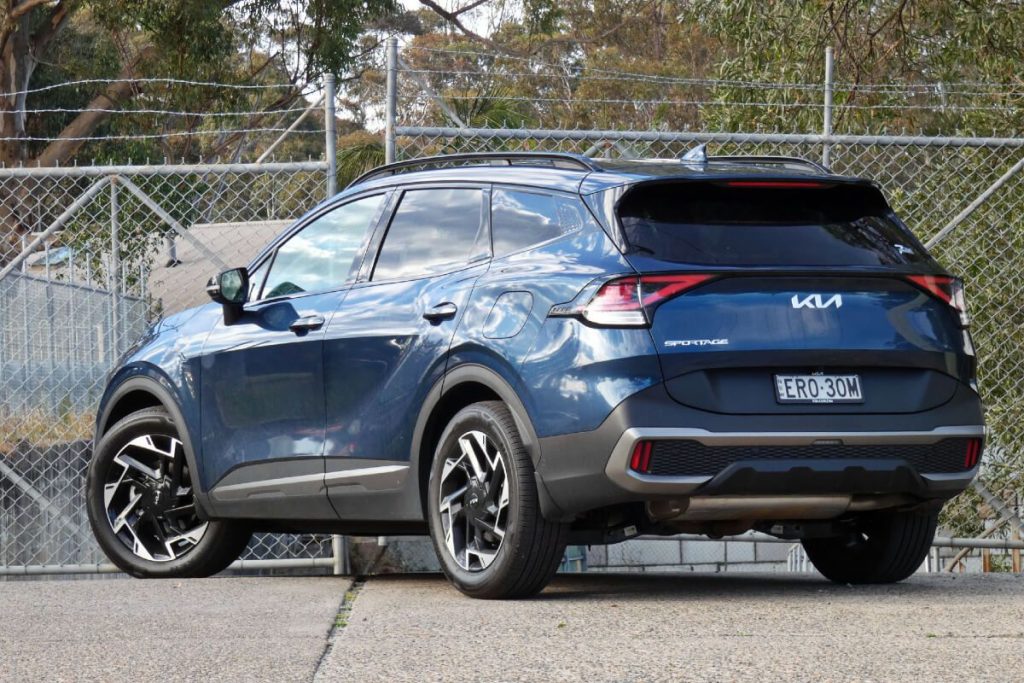
[review]
Our old friend the Kia Sportage needs little introduction.
It’s one of the best-selling SUVs in the country and we’ve owned a couple over the years, including the first one.
Now in its fifth generation, the current model was released in 2021 and is a much larger vehicle than its predecessors.
With seating for five, it’s 17.5cm longer and has an 85mm longer wheelbase than the previous model, and that translates to more interior space, together with more rear legroom.
Long story short, you get more car for your money, literally – but it costs more too.
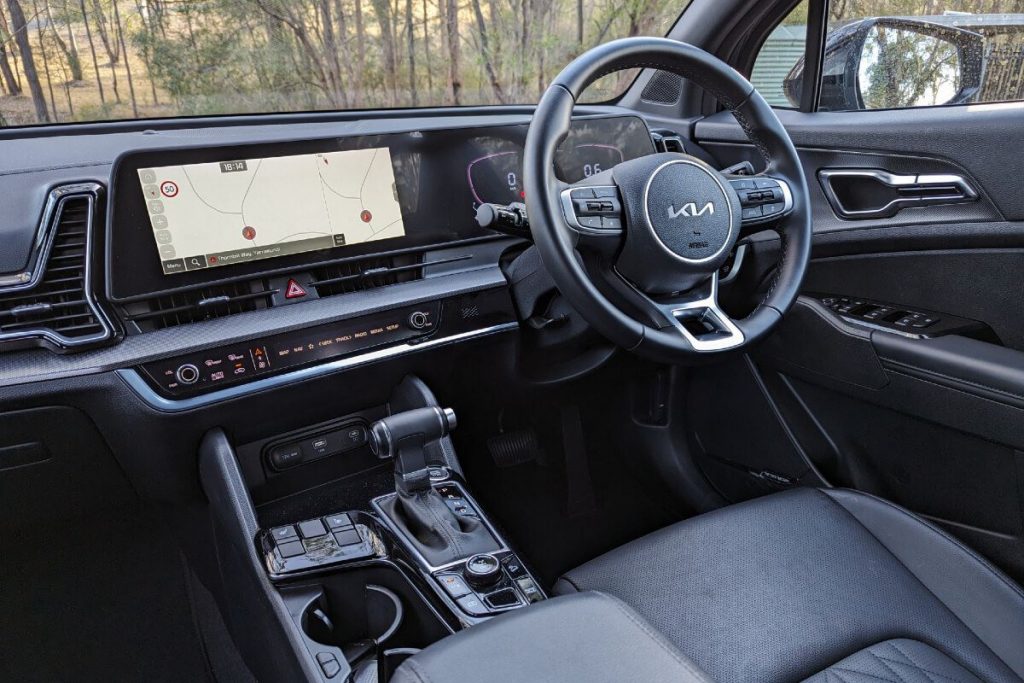
What’s it cost?
Kia’s Sportage, with its boomerang-shaped LEDs and elaborate alloy wheels, is not easily mistaken for any other SUV on the road.
But with just 181mm of ground clearance, it’s clearly not designed to go off road, not in the true sense of the term – but few so-called SUVs are these days.
It’s all about versatility and ease of entry and exit.
There are three grades: S, SX, SX+ and GT-Line, ranging in price from $32,795 to $52,720 plus on-roads.
Kicking off the range is the 2.0-litre petrol S with a six-speed manual transmission and front-wheel drive.
There’s a choice of three engines: 2.0-litre naturally aspirated petrol, 1.6-litre turbocharged petrol and 2.0-litre turbocharged diesel, each with different transmissions, along with front- or all-wheel drive.
Our test vehicle was the value for money SX+ with a 1.6-litre turbo and seven-speed twin clutch style DCT auto.
Each grade gets a different size and style of wheel.
All are machined finish alloys, 17-inch in the S, 18-inch in the SX and 19-inch for the SX+ and GT-Line (but they look different).
All get a full-size alloy spare.
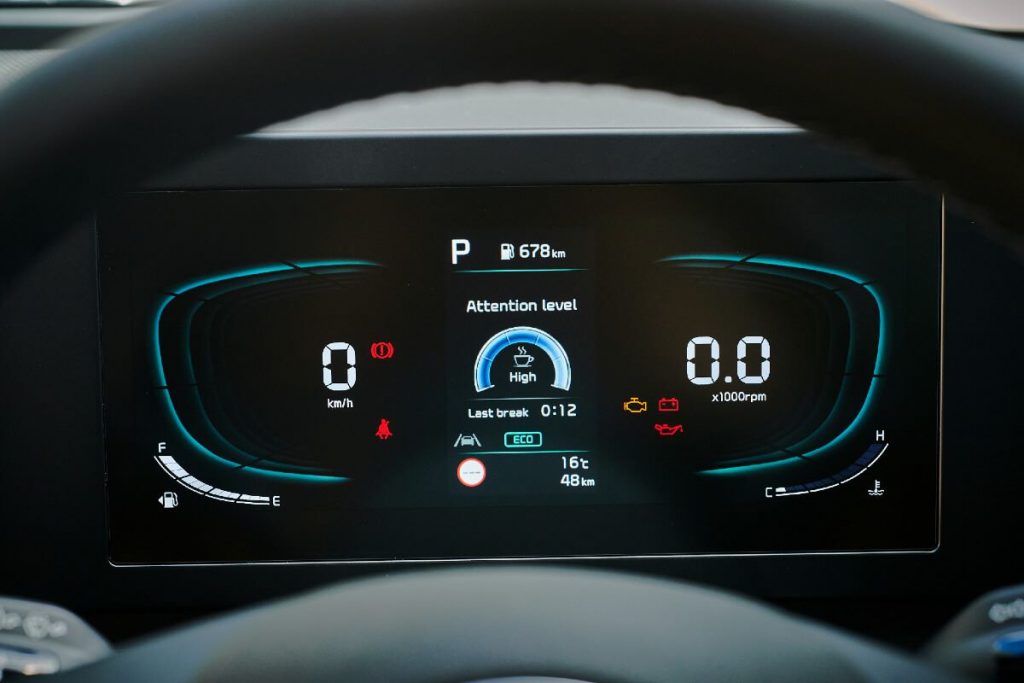
Standard kit includes cloth trim and air conditioning with rear air vents, along with a leather trimmed wheel and shift knob.
Add to this 17-inch wheels, LED front, tail and daytime lights, dusk-sensing headlights with auto high beam, rear parking sensors, plus an 8.0-inch touchscreen with AM/FM radio, wireless Apple CarPlay and Android Auto and six-speaker audio.
Pop for the $2500 optional auto and you also score adaptive cruise control.
The smart money is on the SX+ which gets most of the gear from GT-Line, but saves you dough – more than $6000 in fact.
SX+ adds quilted artificial leather and two-zone climate air, along with built-in navigation, rear privacy glass, heated front seats and a power-adjust driver seat, as well as a power-operated tailgate and eight-speaker Harman Kardon audio.
So, what does the SX+ miss out on?
The major things are shift by wire with a rotary control in place of transmission lever, ventilated front seats, driver seat memory, power-adjust front passenger seat, full LED lights, ambient interior lighting, wireless phone charging and a panoramic sunroof.
Sportage comes with three different-sized screens: 8.0-inch in the S, 12.3-inch in the SX and SX+, plus a 12.3-inch “curved” display combined with 12.3-inch digital instrument cluster in the GT-Line.
All but GT-Line get a basic 4.2-inch driver information panel, located in the centre of the instrument cluster.
SX, SX+ and GT-Line all get satellite navigation with 10-year updates as well as the capacity to personalise preferences such as radio favourites and phone priorities.
All grades get Apple CarPlay and Android Auto, which is wireless in S – but, oddly, wired in the three higher-grades.
There’s a USB-A and USB-C port in the front, plus two USB-C ports in the rear, along with 12-volt outlets in the front and luggage area.
Wireless smartphone charging is available only with GT-Line.
Sportage scores a maximum five stars for safety, with seven airbags, including a centre bag, plus rear-view camera and autonomous emergency braking (Car-to-Car, Vulnerable Road User and Junction Assist).
Also standard is a lane support system with lane keep assist (LKA), lane departure warning (LDW) and emergency lane keeping (ELK), and an advanced speed assistance system (SAS).
There’s also blind spot collision avoidance assist (BCA) with rear cross traffic collision avoidance (RCCA), multi-collision braking (MCB), driver attention alert (DAA) and safe exit warning (SEW).
Sportage is covered by a seven-year warranty, with seven-year roadside assist and seven-year capped price servicing.
Service is required every 12 months or 15,000km.

What’s it go like?
The SX+ is quiet, practical and comfortable, but cheap plastics and an unimaginative instrument cluster feel a little low rent.
Handy physical controls together and a second selection panel sit below the main screen, in a design that is quite impressive.
We particularly like the way you can switch between different functions at the touch of an icon.
S, SX and SX+ are available with the 2.0-litre petrol engine that carries over from the previous model, and produces 115kW of power at 6200 rpm and 192Nm of torque at 4500 rpm.
S and SX come standard with a six-speed manual, while all three can be optioned with a six-speed automatic and are front-wheel drive only.
SX+ and GT-Line are available with a 1.6-litre turbocharged petrol engine that produces 132kW and 265Nm, but is available only with a seven-speed dual-clutch automatic – and both are all-wheel drive.
All four grades can be had with a 2.0-litre turbo-diesel that generates an impressive 137kW and 416Nm, and is mated to a conventional eight-speed auto – and all are all-wheel drive.
Looking at the figures, the diesel outguns both petrol engines in all of the crucial areas – power, torque and fuel consumption.
That’s not to say either petrol engine is disappointing; it’s just that you’re going to have to pay a minimum $3000 for the privilege of upgrading to the diesel.
In the case of SX+, the premium is $3400 and that’s a sobering thought.
The turbocharged petrol unit is the compromise and, with maximum torque available from a low 1500 all the way through to 4500 revs – it offers plenty of get up and go.
But this performance at the cost of the twin clutch auto and the idiosyncrasies that they all seem to share – hesitancy, indecisiveness and generally jerky gear changes.
It’s a love-hate relationship, but we’ve noticed of late that some manufacturers seem to have moved away from them, at least with some of their models – maybe because of bad customer feedback?
Car companies like the design because they produce lower fuel consumption and less harmful engine emissions.
Apart from an initial meltdown when you plant your right foot, they rip through the gears in rapid succession, both accelerating and decelerating.
The feeling is exhilarating, but anything in between is problematic – particularly speeding up and slowing down repeatedly in traffic where they become somewhat confused.
Then there’s our driveway.
It’s short and steep and our car is usually parked at the top.
Slowing down so as not to hit it, the transmission drops down a gear in anticipation and the car surges forward as a result, necessitating hurried braking before we rear end our own car.
Taking your foot off the brake to nudge a little closer sees the car roll back. Herein lies the problem.
There’s Normal, Eco, Sport and Smart drive modes, plus the continued ability to lock drive equally between the front and rear wheels.
But the only way to really take control of the pesky DCT is to put it in manual mode and change gears yourself using the steering wheel-mounted change paddles.
Give us the eight-speed auto anytime.
Steering, braking, ride and handling, meanwhile, are all testament to Kia’s comprehensive local tuning program.
But, having said that, we were surprised when the car almost self-destructed on its first speed hump.
Rated at 7.2L/100km, we were getting 8.4L after close to 600km.
The diesel in comparison gets 6.3L/100km.
Nice to see the turbo is tuned to take standard unleaded. It wasn’t always the case.

What we like
- Looks
- Bigger inside
- Some smart tech
- Cheaper than GT-Line
What we don’t like
- Looks better in white
- Indecisive off the mark
- Jerky gear changes
- Position of electric handbrake
What over-50s drivers need to know
The Kia Sportage should be on the shopping list of most buyers.
It ticks a lot of boxes and comes with a range of equipment to suit every budget.
It’s easy and practical and the car we bought when I gave up working fulltime, listening to my own advice for once – and we still have it.
Every time Kia brings out a new model, we weigh up the pros and cons of updating our Platinum third-generation Sportage, a car that still looks fabulous to this day.
The only thing we really miss is a power tailgate and adaptive cruise control, certainly not sufficient reason to part with our money yet.
Too bad it’s now out of warranty.
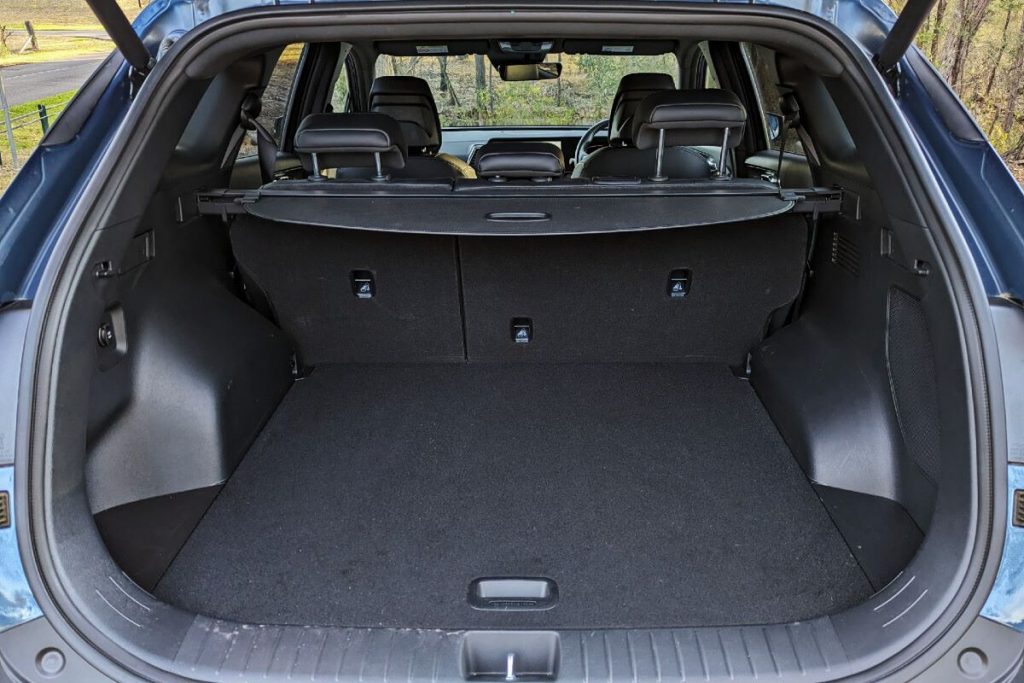
seniordriver comments
It’s often said that motoring writers happily recommend cars that they’d never buy, so when Chris admits to owning more than one Kia Sportage, it shows just how genuine he is in his admiration for it. And we tend to agree.
As we often find with Kia (and Hyundai, for that matter), the mid-range cars seem to offer the best value for money. The entry level cars, while worthy enough, tend to feel a little too penny-pinching, while the top-end models simply cost too much more than other models in the range. The Sportage is typical, with the top-of-the-range GT-Line coming in at a substantial $20,000 premium over the lesser model. Even the SX+ is $6000 less than the GT-Line, and that’s a considerable differential.
The 2.0-litre petrol engine is a little underpowered, but the 1.6-litre turbo delivers the goods (132kW as against 115 and 265Nm against the 2.0-litre’s 192). The diesel is even more impressive with 137kW and 416Nm of torque, and even though it shades both the petrol engines on power, torque and fuel consumption, but that $3400 premium bears consideration before making a final decision.
